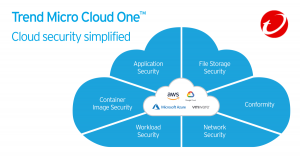This Week in Security News: A Look Inside the Bulletproof Hosting Business and Amazon Prime Day Spurs Spike in Phishing, Fraud Attacks

Welcome to our weekly roundup, where we share what you need to know about the cybersecurity news and events that happened over the past few days. This week, learn about how cybercriminals secure their assets and survive in the business in a new Trend Micro report. Also, read about a how cybercriminals are tapping into Amazon’s Prime Day with phishing and malicious websites that are fraudulently using the Amazon brand.
Read on:
French Companies Under Attack from Clever BEC Scam
Trend Micro researchers observed a new modus operandi involving a clever BEC campaign that uses social engineering to target French companies. Malicious actors impersonated a French company in the metal fabrication industry that provides services to several organizations. They then registered a domain very similar to the legitimate one used by the business and used it to send emails to their targets.
Amazon Prime Day Spurs Spike in Phishing, Fraud Attacks
Cybercriminals are tapping into Amazon’s annual Prime Day with researchers warning of a recent spike in phishing and malicious websites that are fraudulently using the Amazon brand. There has been a spike in the number of new monthly phishing and fraudulent sites created using the Amazon brand since August, the most significant since the COVID-19 pandemic forced people indoors in March.
CSO Insights: DataBank’s Mark Houpt on Looking Beyond Securing Infrastructures in the New Normal
The big move to working remotely wasn’t completely difficult for Mark Houpt, CISO at DataBank. After all, he has been doing so since before COVID-19. However, when the pandemic hit, DataBank, like many other companies across the globe, had to help most of their employees transition securely and smoothly to virtual work. Read up on the several important security considerations this experience highlighted.
240+ Android Apps Caught Showing Out-of-Context Ads
This summer, Google removed more than 240 Android applications from the Play Store for showing out-of-context ads and breaking a newly introduced Google policy against this type of intrusive advertising. Out-of-context ads are mobile ads that are shown outside an app’s normal container and appear as pop-ups or as full-screen ads.
Safe and Smart Connections: Securing IoT Networks for Remote Setups
As a result of our work-from-home (WFH) arrangements, there is an increased demand on networks as remote operations have created greater dependence on the IoT. Subsequently, now is a good time to re-examine the security of your network. Rather than only focusing on securing individual devices that can compromise a network, users should also secure the network to minimize threats across several devices.
Inside the Bulletproof Hosting Business
The use of underground infrastructure is inherent to the modus operandi of a cybercriminal. In Trend Micro’s Underground Hosting series, it differentiates how cybercrime goods are sold in marketplaces and what kinds of services are offered. In this final part of the Underground Hosting report series, Trend Micro explores the methods criminals employ to secure their assets and survive in the business.
Comcast Voice Remote Control Could be Turned into Spying Tool
The Comcast XR11 voice remote controller was recently found to be vulnerable and could be turned into a spying tool that eavesdrops on users. Discovered by researchers at Guardicore, the attack has been named WarezTheRemote and is said to be a very serious threat, considering that the remote is used for over 18 million devices across the U.S.
Transforming IoT Monitoring Data into Threat Defense
In the first half of 2020, there was a 70% increase in inbound attacks on devices and routers compared to the second half of 2019, which included attacks on IoT systems. To protect customers effectively by continuously monitoring trends in IoT attacks, Trend Micro examined Mirai and Bashlite (aka Qbot), two notorious IoT botnet malware types, and shares the figures relating to these botnets’ command and control (C&C) servers, IP addresses, and C&C commands.
Russia’s Fancy Bear Hackers Likely Penetrated a Federal Agency
Last week the Cybersecurity and Infrastructure Security Agency published an advisory that hackers had penetrated a US federal agency. Now, clues uncovered by a researcher at cybersecurity firm Dragos and an FBI notification to hacking victims obtained by WIRED in July suggest that it was Fancy Bear, a team of hackers working for Russia’s GRU also known as APT28.
Threat Research & XDR Combine to Stop Cybercrime
Like legitimate businesses across the globe seeking to improve their information security and protect their network infrastructure, cybercriminal businesses take similar precautions. Trend Micro Research released the final report in a series focused on this part of cybercriminal business: Underground hosting providers. Based on the report, it’s clear that understanding both the criminal business and the attacks themselves better prepares defenders and investigators to identify and eliminate threats.
Researchers Find Vulnerabilities in Microsoft Azure Cloud Service
As businesses are increasingly migrating to the cloud, securing the infrastructure has never been more important. According to research by Paul Litvak of Intezer Labs, two security flaws in Microsoft’s Azure App Services could have enabled a bad actor to carry out server-side request forgery (SSRF) attacks or execute arbitrary code and take over the administration server.
Cyber Security Awareness: A Critical Checklist
October 2020 marks the 17th year of National Cybersecurity Awareness Month, where users and organizations are encouraged to increase awareness of cybersecurity issues. To help raise awareness, Trend Micro’s Consumer Division breaks down of the security issues you should be aware of and shares tips about how you can protect yourself and your family while working, learning, or gaming at home.
The Basics of Keeping Kubernetes Cluster Secure: Worker Nodes and Related Components
In part one of this blog series, Trend Micro talked about the different ways developers can protect control plane components, including Kube API server configurations, RBAC authorization, and limitations in the communication between pods through network policies. In this second part, Trend Micro focuses on best practices that developers can implement to protect worker nodes and their components.
Are you surprised that Comcast voice activated remote controllers could be turned into a spying tool? Share your thoughts in the comments below or follow me on Twitter to continue the conversation: @JonLClay.
Read More HERE



